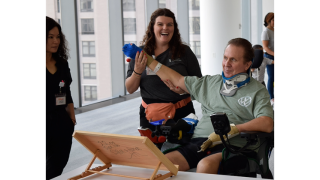“The degree to which individuals have the capacity to obtain, process and understand basic health information and services needed to make appropriate health decisions.” — Source: Healthy People 2010
Body
Health Literacy concerns the ability of the care provider to communicate in plain language and the patient's understanding of the medical information communicated or read concerning diagnostics, care and responsibility.
We are all responsible in achieving optimal health communication for effective, efficient understanding and best practice outcomes.
Low health literacy is more prevalent among:
- Older adults
- Minority populations
- Those who have low socioeconomic status
- Medically underserved people
Patients with low health literacy may have difficulty:
- Locating providers and services
- Filling out complex health forms
- Sharing their medical history with providers
- Seeking preventive health care
- Knowing the connection between risky behaviors and health
- Managing chronic health conditions
- Understanding directions on medicine
Health Resources and Services Administration HRSA
Health Literacy Video: help your patients understand
NIH National Institutes of Health: Clear Communication: Health Literacy
Rural Health Information Hub Rural Health Literacy: Understanding Skills and Demands is Key to Improvement.
Considerations for a New Definition of Health Literacy paper: April 4, 2016
AHRQ Agency for Health Care Research and Quality:
SAHL Short Assessment of Health Literacy Tools: (English and Spanish)
UF-Health Literacy Guide from George A. Smathers Libraries
Health Literacy Tool Shed:A database of health literacy measures
National Assessment of Adult Literacy (NAAL) – The NAAL is a nationally representative assessment of English literacy among American adults age 16 and older. Sponsored by the National Center for Education Statistics (NCES), the NAAL is the Nation’s most comprehensive measure of adult literacy. The Health Literacy Component of the NAAL introduces the first-ever national assessment of adults’ ability to use literacy skills with health-related materials and forms.
TOHFLA is the Test of Functional Health Literacy in Adults.
(more information about the Robert Wood Johnson grant)
The Newest Vital Sign is a bilingual (English and Spanish) screening tool that identifies patients at risk for low health literacy. The tool can be administered in a clinical setting in just three minutes. The test result provides information about the patient that will allow providers to appropriately adapt their communication practices in an effort to achieve better health outcomes.This tool is free and easily available through the Pfizer Clear Health Communication Initiative. That site also provides information on the development and validation of the tool.
The Single Item Literacy Screener: a tool that has been shown to perform moderately well in identifying patients who should be further assessed: [see below article]
Morris, N. S., C. D. MacLean, et al. (2006). "The Single Item Literacy Screener: evaluation of a brief instrument to identify limited reading ability." BMC Family Practice 7: 21, available at http://www.biomedcentral.com/1471-2296/7/21,



